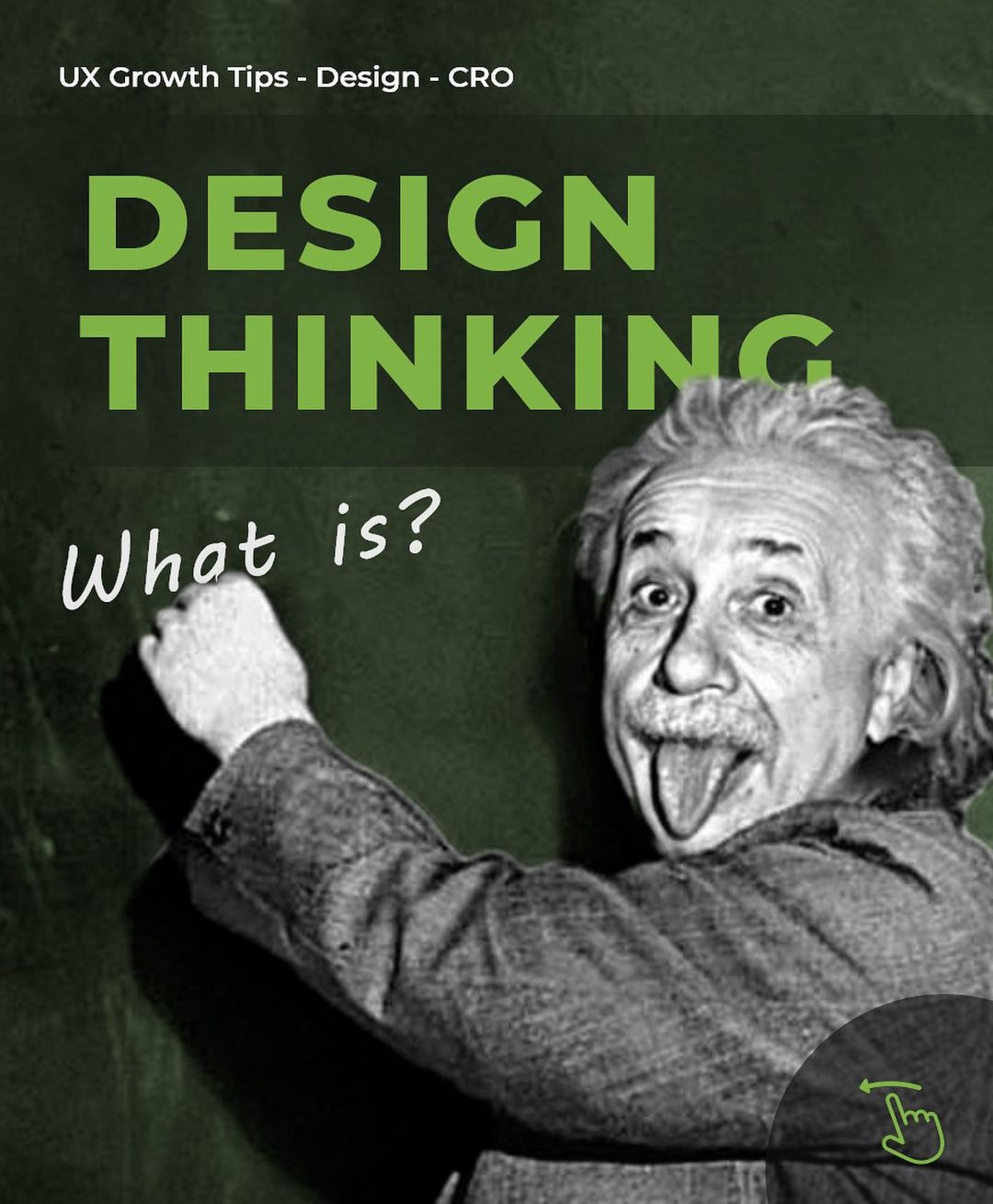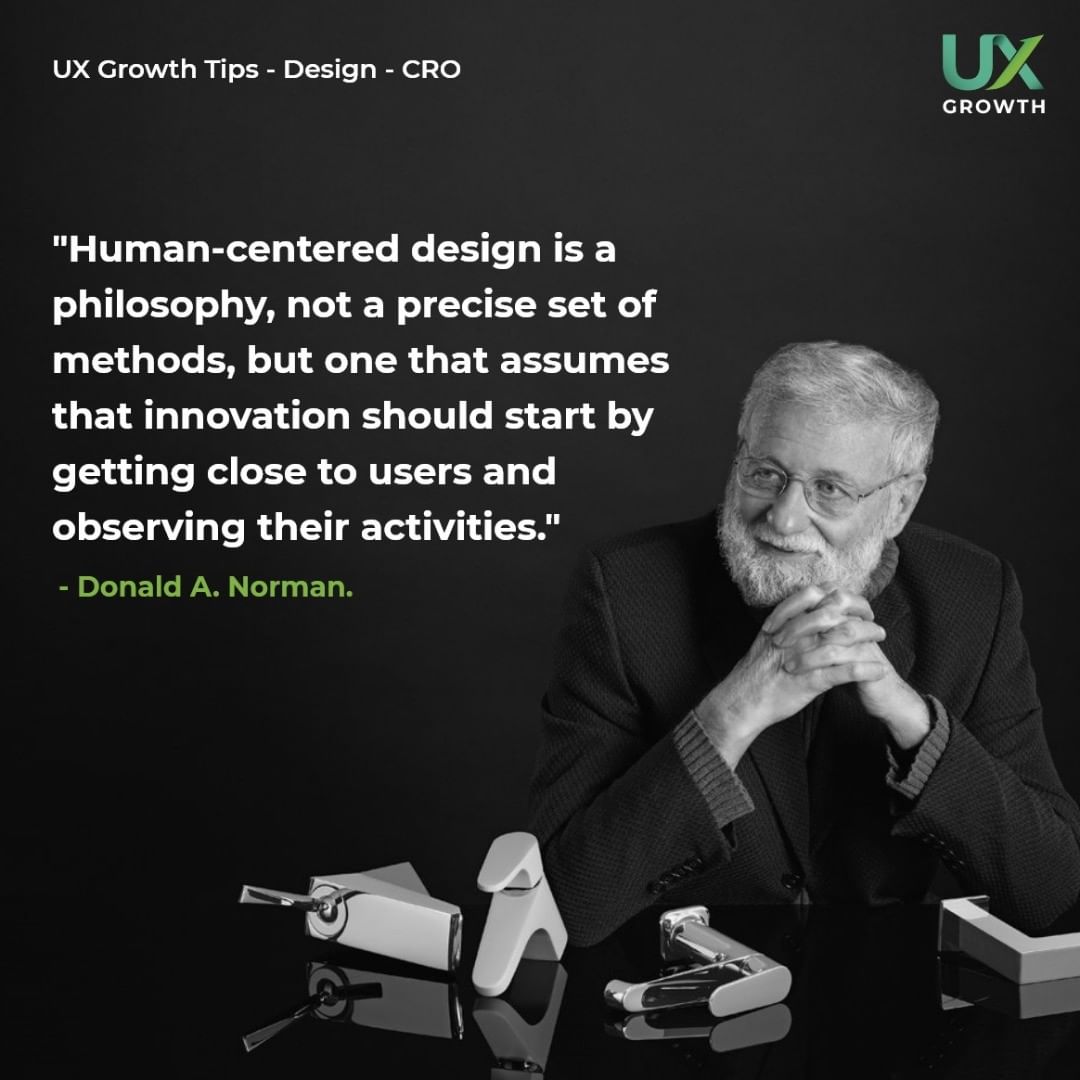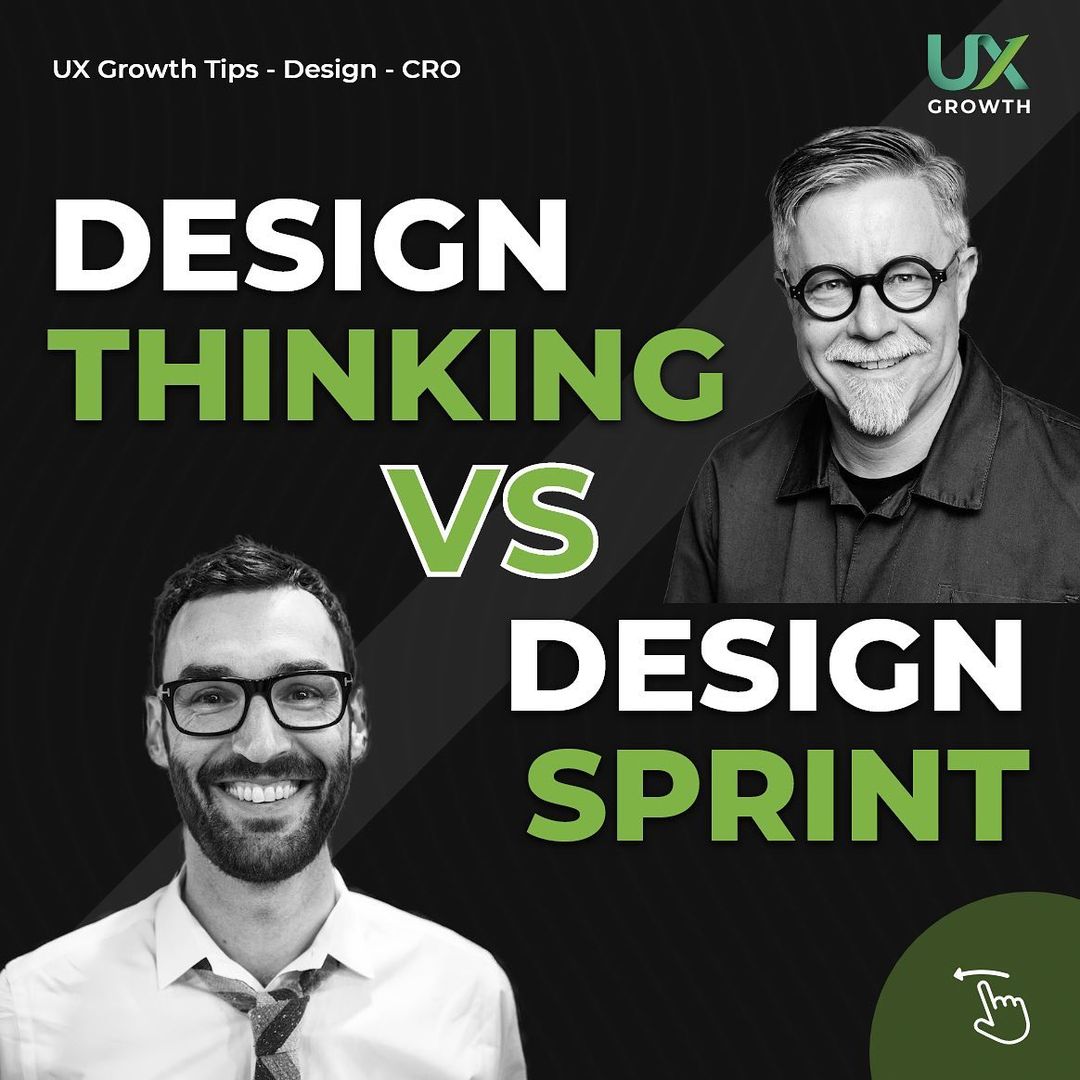Empathy in Design Thinking: The Key to Innovation Success
Design Thinking focuses on understanding user needs through empathy and problem definition. It involves generating innovative ideas, prototyping solutions, and evaluating prototypes for effectiveness. Design Thinking is crucial in industry for driving innovation and offering unique user experiences. It addresses complex challenges with a user-centered approach, promoting business success through creative problem-solving strategies.
Understanding Users' Needs
Understanding users' needs is at the core of effective design thinking, driving the creation of innovative and impactful solutions. By focusing on empathetic research and human-centered design principles, designers can gain valuable insights into users' experiences, preferences, and pain points.
Human-Centered Design Principles
- Focus on the user
- Iterate and refine designs based on user feedback
- Consider the holistic user experience
- Collaborate across disciplines to gain diverse perspectives
Empathy in Design Thinking
Empathy is the ability to understand and share the feelings of others. In design thinking, empathy plays a crucial role in uncovering deep insights into users' motivations, emotions, and behaviors. By empathizing with users, designers can develop solutions that truly resonate with their needs and desires.
Defining the Problem
Identifying the Root Challenges
Identifying the root challenges involves digging beneath the surface to uncover the underlying issues that need to be addressed. By identifying the core problems faced by users, designers can create more targeted and effective solutions that directly address their needs.
User-Centered Problem Statements
Formulating user-centered problem statements is essential for guiding the design process in the right direction. These statements should be clear, concise, and focused on addressing the specific needs and pain points of the target users. By defining the problem from the user's perspective, designers can ensure that their solutions are relevant and impactful.
Defining the Problem
When it comes to design thinking, defining the problem is a critical step in the process. By identifying the root challenges and formulating user-centered problem statements, teams can ensure that they are addressing issues that truly matter. This phase sets the foundation for the rest of the design thinking journey, guiding the team towards innovative and effective solutions.
Identifying the Root Challenges
- Conduct user research to gain insights into user needs and pain points.
- Analyze data to uncover patterns and trends that may indicate underlying issues.
- Engage stakeholders to gather different perspectives and identify diverse challenges.
User-Centered Problem Statements
Once the challenges have been identified, it is essential to craft user-centered problem statements that clearly articulate the issues at hand. These statements should be focused on the needs and desires of the end users, ensuring that the solutions developed will have a meaningful impact. By refining the problem statements based on user feedback and iterative testing, teams can align their efforts with user expectations and deliver truly valuable solutions.
Generation of Innovative Ideas
In the creative process of design thinking, the generation of innovative ideas plays a crucial role in developing solutions that truly address user needs. By leveraging various brainstorming techniques and the SCAMPER method, design teams can unlock their creativity and explore diverse possibilities to solve complex problems.
Brainstorming Techniques in Design Thinking
- Brainstorming sessions encourage collaboration and out-of-the-box thinking
- Divergent and convergent thinking are utilized to explore a wide range of ideas and narrow down to feasible solutions
- Ideas are captured without judgment to foster a creative and inclusive environment
SCAMPER Method for Idea Generation
- SCAMPER stands for Substitute, Combine, Adapt, Modify, Put to another use, Eliminate, Reverse
- Each letter represents a different approach to reimagining existing ideas and generating new ones
- By applying SCAMPER systematically, design teams can challenge assumptions and innovate effectively
Prototyping Solutions
Prototyping solutions is a crucial phase in the design thinking process. By creating scaled prototypes, teams can visually represent their ideas and gather feedback from users to refine and improve their solutions.
Creating Scalable Prototypes
- Generate low-fidelity prototypes to quickly test concepts
- Use prototyping tools like Sketch or Adobe XD for digital prototypes
- Incorporate feedback from users to iterate on the design
User Testing and Feedback
- Conduct user testing sessions to observe how users interact with the prototype
- Gather feedback on usability, clarity, and effectiveness
- Iterate on the design based on user input to enhance the solution
Evaluation of Prototypes
Creating Scalable Prototypes
Prototyping is a crucial step in the design thinking process. By creating scalable prototypes, designers can visualize and test their ideas in a tangible form. These prototypes should be flexible and easy to modify based on user feedback.
- Use prototyping tools to quickly iterate on design concepts
- Ensure prototypes are user-friendly and intuitive
- Consider scalability and adaptability in prototype development
User Testing and Feedback
User testing plays a vital role in evaluating prototypes. By gathering feedback from real users, designers can identify strengths and weaknesses in their designs and make informed decisions on how to improve them.
- Conduct usability tests to observe how users interact with the prototype
- Solicit feedback through surveys and interviews to gather qualitative data
- Analyze user feedback to identify areas for refinement and enhancement
Leveraging Design Thinking in Industry
Leveraging Design Thinking in Industry involves applying the principles and methodologies of Design Thinking to drive innovation and problem-solving in various sectors. By integrating user-centric approaches and creative ideation, businesses can create impactful solutions that address industry challenges effectively.
Addressing Complex Problems
Addressing Complex Problems in industry requires a deep understanding of the underlying issues and the ability to innovate solutions that cater to the diverse needs of stakeholders. By leveraging Design Thinking, organizations can break down complex problems into manageable components and develop holistic strategies that tackle root causes effectively.
Overcoming Resistance to Change
Overcoming Resistance to Change is a common challenge in industry when implementing new approaches or technologies. Design Thinking offers a human-centered approach that involves stakeholders in the innovation process, fostering a culture of collaboration and openness to change. By engaging employees in the design and implementation process, organizations can overcome resistance and drive successful transformation initiatives.
Challenges and Limitations
Addressing Complex Problems
In the realm of design thinking, facing complex problems is a common challenge. These issues often involve multiple stakeholders, conflicting interests, and intricate systems that require innovative solutions. Here are some strategies to overcome this challenge:
- Collaborate with diverse experts to gain different perspectives on the problem.
- Break down the problem into smaller, more manageable components for analysis.
- Utilize design thinking tools such as journey mapping and empathy mapping to understand the problem from various angles.
Overcoming Resistance to Change
Another critical challenge in implementing design thinking is overcoming resistance to change within organizations. Change can be met with skepticism, fear, and reluctance, hindering the adoption of new processes. To address this challenge, consider the following approaches:
- Communicate the benefits of design thinking clearly and effectively to all stakeholders.
- Provide training and support to help employees understand and embrace the new methodologies.
- Encourage a culture of experimentation and learning, where failures are seen as opportunities for growth and innovation.
Importance of Design Thinking in Innovation
Innovation in today's rapidly evolving business landscape requires a fresh approach, and Design Thinking plays a pivotal role in driving forward creative solutions and breakthrough concepts. By fostering a user-centric mindset and encouraging interdisciplinary collaboration, Design Thinking empowers organizations to uncover hidden opportunities and address complex challenges effectively.
Impact on User Experience
Design Thinking places a strong emphasis on understanding user needs and preferences, resulting in products and services that resonate with the target audience on an emotional level. By incorporating user feedback throughout the design process, companies can create intuitive and engaging experiences that foster customer loyalty and satisfaction.
Driving Business Success
Design Thinking has proven to be a game-changer for businesses across various industries, enabling them to differentiate themselves in competitive markets and stay ahead of emerging trends. The methodology's focus on empathy, ideation, and rapid prototyping helps organizations align their offerings with customer demands, drive innovation, and achieve sustainable growth.
Case Studies and Success Stories
- Leading tech company X leveraged Design Thinking to revolutionize its product development process, resulting in a 30% increase in customer satisfaction and a 20% boost in sales.
- Global design agency Y utilized Design Thinking principles to streamline its project management workflows, leading to a 40% reduction in turnaround times and a 15% improvement in client retention rates.
Real-World Applications
- In the healthcare sector, Design Thinking has been instrumental in designing patient-centric care solutions that enhance treatment outcomes and improve overall wellness.
- Within the financial services industry, organizations are embracing Design Thinking to create user-friendly digital banking interfaces that simplify complex transactions and build trust with customers.
Design Thinking Methodology in Practice
Evolution of Design Thinking
Design thinking has evolved over time, adapting to the changing landscape of innovation and problem-solving. In its early stages, design thinking focused primarily on user-centered design principles and empathetic understanding of user needs.
In recent years, there has been a shift towards a more holistic approach, incorporating elements of systems thinking, co-creation with users, and a deeper emphasis on collaboration and interdisciplinary teamwork.
Integration with Emerging Technologies
As technology continues to advance at a rapid pace, design thinking has begun to integrate seamlessly with emerging technologies to drive innovation and create impactful solutions. The incorporation of tools such as virtual reality, artificial intelligence, and machine learning has opened up new possibilities for design thinking practitioners.
By leveraging these emerging technologies, design thinkers can prototype and test ideas more effectively, gather real-time data on user interactions, and iterate on solutions rapidly to meet evolving user needs and market demands.
Future Trends and Developments
The future of Design Thinking holds exciting opportunities for innovation and advancement in various industries. As technology continues to evolve, Design Thinking is expected to integrate with emerging technologies to enhance problem-solving capabilities and user experiences. Let's explore some key trends and developments shaping the future landscape of Design Thinking:
Evolution of Design Thinking
- Design Thinking methodologies are constantly evolving to meet the changing needs of users and businesses.
- Future iterations of Design Thinking may incorporate new tools and techniques to streamline the design process and drive innovation.
- Adaptation to emerging trends in technology and design will shape the future direction of Design Thinking practices.
Integration with Emerging Technologies
- Design Thinking is expected to leverage emerging technologies such as artificial intelligence and virtual reality to enhance the design process.
- Integration of data analytics and predictive modeling tools will enable designers to make informed decisions and optimize user experiences.
- The synergy between Design Thinking and technology will lead to the development of cutting-edge solutions that address complex problems effectively.
Ethical Considerations in Design Thinking
Ethics plays a crucial role in the design thinking process, ensuring that solutions are not only innovative but also responsible and considerate of all stakeholders involved.
User Privacy and Data Protection
- Respecting user privacy: Designers must prioritize the protection of user data and ensure that information is collected and used ethically.
- Transparency in data practices: It is essential to communicate clearly with users about data collection, storage, and usage.
- Compliance with regulations: Design solutions should adhere to data protection laws and regulations to safeguard user information.
Ensuring Equity and Inclusivity
- Addressing bias in design: Designers should be mindful of inherent biases and strive to create inclusive solutions that cater to diverse needs.
- Representation in design: Ensuring representation of various demographics in the design process to create solutions that are accessible to all.
- Accessibility considerations: Design thinking should prioritize accessibility to ensure that solutions are usable by individuals of all abilities.
Implementing Design Thinking in Education
Design Thinking principles are increasingly being integrated into educational settings to foster creative problem-solving skills among students. By incorporating design thinking methodologies in education, students are encouraged to think innovatively, collaborate effectively, and approach challenges with a human-centered mindset.
Training the Next Generation of Design Thinkers
Preparing students to become proficient in Design Thinking involves equipping them with the necessary tools and techniques to identify user needs, redefine problems, and devise innovative solutions. This training not only enhances students' problem-solving abilities but also nurtures their creativity and empathy towards others.
Design Thinking Curriculum and Resources
- Curriculum development focused on interdisciplinary problem-solving
- Integration of design thinking tools and methods into existing courses
- Access to online resources for students to deepen their understanding
- Collaboration with industry partners to provide real-world design challenges
Design Thinking Community Engagement
Sharing Knowledge and Best Practices
In the realm of Design Thinking, community engagement plays a vital role in sharing knowledge and best practices among practitioners. By fostering a culture of collaboration and open communication, individuals can learn from each other's experiences and insights, leading to a collective growth in expertise and innovation.
Collaboration and Networking Opportunities
Engaging with the Design Thinking community provides valuable collaboration and networking opportunities for professionals looking to expand their horizons. Through participation in workshops, seminars, and online forums, individuals can connect with like-minded peers, share ideas, and build relationships that can lead to exciting new projects and partnerships.
Design Thinking Resources and References
The section on Design Thinking Resources and References provides valuable information for individuals and organizations looking to delve deeper into the world of design thinking. Below are some key subtopics covered in this section:
Search and Sharing Capabilities
- Utilize search functionality to easily locate design thinking resources, tools, and articles.
- Enhance collaboration and knowledge-sharing by sharing design thinking insights with like-minded professionals.
Search Functionality for Design Thinking Resources
Effective search functionality allows users to quickly access relevant design thinking resources and references. By utilizing search tools, individuals can streamline their research process and discover valuable insights.
Share the Knowledge!
Sharing design thinking knowledge and experiences is essential for building a collaborative community of design thinkers. By sharing insights, best practices, and case studies, individuals can contribute to the growth and development of the design thinking field.
Search and Sharing Capabilities
In the world of Design Thinking, having effective search and sharing capabilities is crucial to facilitate collaboration and access to valuable resources. Let's explore how these features enhance the design process:
Search Functionality for Design Thinking Resources
- Utilize advanced search algorithms to quickly find relevant design thinking articles, case studies, and tools.
- Filter search results based on criteria such as industry, problem domain, or specific methodologies.
- Integrate keyword tagging to classify resources and improve search accuracy.
Share the Knowledge!
- Enable easy sharing options for design thinking materials within teams and across organizations.
- Integrate social media sharing buttons to promote insightful content to a wider audience.
- Implement collaborative platforms for real-time sharing and co-creation of design solutions.
Citing Sources and Academic Standards
Cite according to Academic Standards
When referencing sources in academic work related to design thinking, it is essential to adhere to established academic standards. This not only demonstrates credibility but also ensures that proper credit is given to original authors and contributors. Academic citations serve as a roadmap for readers to access the sources and deepen their understanding of the topic.
APA Style
- APA (American Psychological Association) style is commonly used in academic writing to cite sources. It provides a consistent format for citing references in research papers, essays, and other academic publications.
- The APA style includes guidelines for in-text citations, references lists, and overall paper formatting. Properly citing sources according to APA style helps maintain academic integrity and ensures accurate attribution of ideas.
MLA Format
- MLA (Modern Language Association) format is another popular style for citing sources in academic writing. It is commonly used in the humanities and liberal arts disciplines.
- MLA format includes guidelines for citing sources within the text and creating works cited pages. Consistency and accuracy in following MLA guidelines are crucial for academic papers to uphold scholarly standards.
Scholarly Integrity
Academic standards play a vital role in upholding scholarly integrity within the design thinking community. By citing sources accurately and following established conventions, researchers and practitioners contribute to the ongoing dialogue and advancement of knowledge in the field.
Ethical Considerations
- Adhering to ethical principles in academic writing involves recognizing the intellectual contributions of others through proper citation.
- Respecting authors' works by citing them appropriately fosters a culture of academic honesty and supports the ethos of collaborative learning and innovation.
Beginner's Guide to UX Design
The Beginner's Guide to User Experience (UX) Design provides an introduction to the fundamental concepts and principles of designing user-centered interfaces. Whether you're new to the field or looking to expand your knowledge, this guide offers valuable insights into creating engaging and intuitive digital experiences.
Frequently Asked Questions (FAQs)
Common Inquiries About Design Thinking
- What is the role of empathy in the design process?
- How can design thinking benefit organizations?
- What are the key steps in defining user-centered problems?
- How can ideation techniques enhance creativity in design?
Frequently Asked Questions (FAQs)
Curious about common inquiries related to Design Thinking? Check out the answers to some of the questions frequently asked about this innovative methodology.
Common Inquiries About Design Thinking
- What is the primary goal of Design Thinking?
- How does empathy play a role in the Design Thinking process?
- Why is prototyping essential in Design Thinking?
Addressing Complex Problems
Explore how Design Thinking tackles intricate challenges by advocating for user-centric solutions and iterative problem-solving techniques.
Understanding Users' Needs
Discover the importance of empathizing with users to truly comprehend their perspectives and requirements.
Defining the Problem
Learn how to identify and articulate the core issues at the heart of a design challenge through user-centered problem statements.
Generation of Innovative Ideas
Unleash your creativity by engaging in brainstorming sessions and utilizing techniques like SCAMPER for idea generation.
Design Thinking Processes
In the realm of design thinking, the processes followed are crucial for achieving innovative solutions and addressing complex challenges effectively. Understanding the key steps and methods involved in design thinking processes is essential for driving meaningful change and creating user-centered solutions.
Knowledge Sharing Initiatives
Knowledge sharing plays a vital role in democratizing design knowledge and fostering a collaborative environment where ideas can flourish. Through various initiatives aimed at sharing insights, best practices, and success stories, the design thinking community can collectively enhance its understanding and capabilities.
Democratizing Design Knowledge
Democratizing Design Knowledge is a crucial aspect of spreading awareness and accessibility in the field of design thinking. By making design knowledge more inclusive and readily available, we empower individuals from diverse backgrounds to engage in creative problem-solving and innovation.
Knowledge Sharing Initiatives
- Fostering a culture of open collaboration and sharing among designers, educators, and industry professionals.
- Creating online platforms and communities where design enthusiasts can freely exchange ideas and resources.
- Organizing design workshops, seminars, and conferences to promote learning and networking opportunities.
Benefits of Democratizing Design Knowledge
- Encourages a more diverse and inclusive design community, representing a wide range of perspectives and experiences.
- Empowers individuals with limited access to traditional design education to develop their skills and contribute to innovative projects.
- Promotes a culture of continuous learning and improvement, inspiring a growth mindset among aspiring designers.
Challenges in Democratizing Design Knowledge
- Ensuring the quality and credibility of design resources shared through online platforms and social media.
- Addressing barriers to access, such as language barriers, digital literacy, and technological constraints.
- Overcoming resistance to change within established design communities that may be hesitant to embrace new, more inclusive practices.
Design Thinking for Innovation
Design Thinking plays a crucial role in driving innovation and fostering creative solutions. In the dynamic landscape of today's industries, the application of Design Thinking principles can lead to groundbreaking advancements and transformative outcomes. By embracing Design Thinking methodologies, organizations can unlock new possibilities, tackle complex challenges, and stay ahead in a competitive market.
Unlocking Creative Solutions
Design Thinking empowers individuals and teams to think outside the box, challenge conventional norms, and explore novel approaches to problem-solving. By encouraging a culture of experimentation and openness to diverse perspectives, Design Thinking fosters a fertile ground for innovation to flourish. Through collaborative ideation and iterative processes, innovative solutions emerge that address user needs, business goals, and societal demands.
Embracing Diversity in Perspectives
- Design Thinking emphasizes the value of diverse perspectives and interdisciplinary collaborations in driving innovation.
- By incorporating viewpoints from various stakeholders, including end-users, experts, and industry leaders, Design Thinking enables a holistic understanding of complex challenges.
- Diversity in perspectives fuels the generation of innovative ideas and ensures that solutions are inclusive, sustainable, and impactful.
Fostering a Culture of Innovation
- Design Thinking cultivates a culture that embraces experimentation, iteration, and continuous learning.
- By promoting a mindset of curiosity and resilience, Design Thinking empowers individuals to embrace uncertainty and explore new possibilities.
- Organizations that prioritize Design Thinking create an environment where innovation thrives, and creative solutions become the norm.
Impact on User Experience
One of the key outcomes of Design Thinking is the enhancement of user experience. By placing users at the center of the design process, Design Thinking ensures that products, services, and experiences resonate with users on a deep level. Through empathy, iteration, and user feedback, Design Thinking elevates the quality of user interactions, leading to increased satisfaction, loyalty, and engagement.
User-Centric Design Principles
- Design Thinking integrates user-centric design principles that prioritize the needs, preferences, and behaviors of end-users.
- By empathizing with users, designers gain valuable insights that inform the creation of user-friendly solutions that address real-world challenges.
- The application of user-centric design principles ensures that products and services meet user expectations, fostering long-term relationships and brand loyalty



